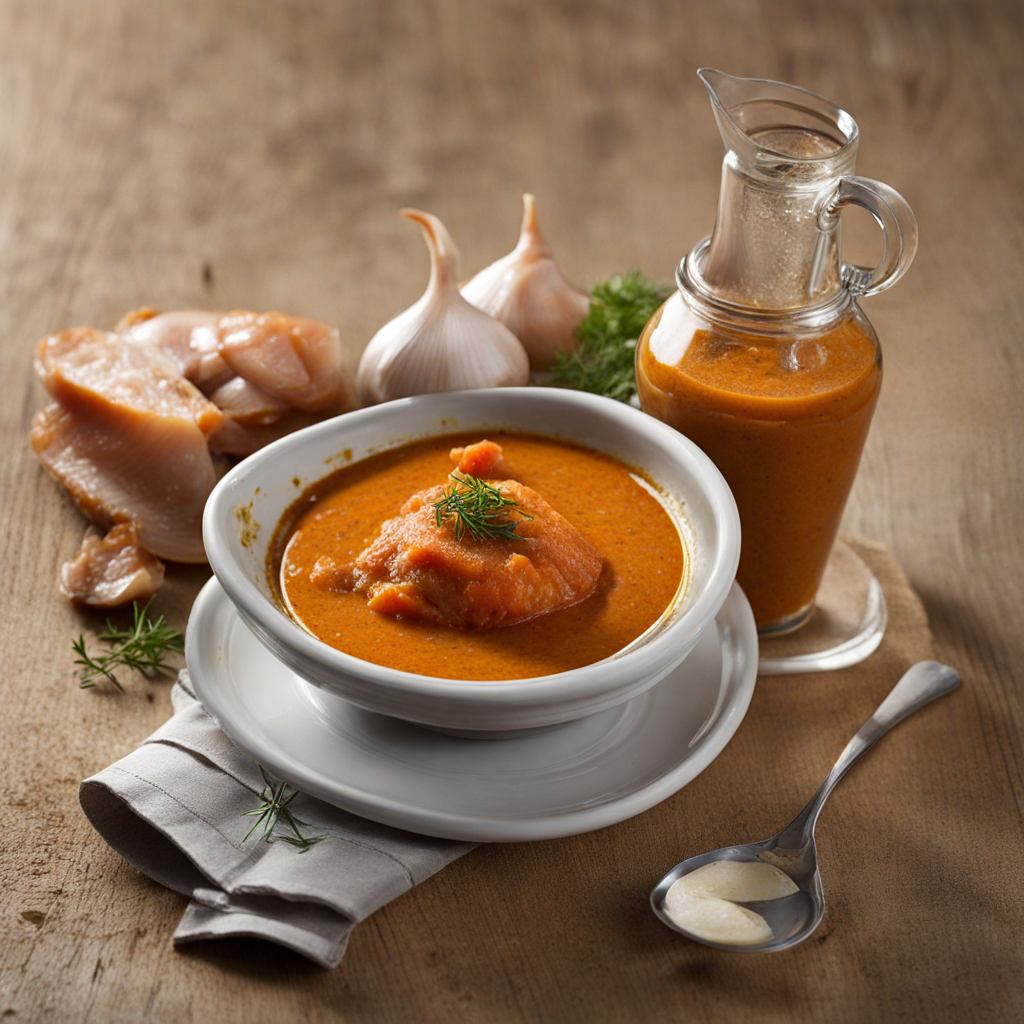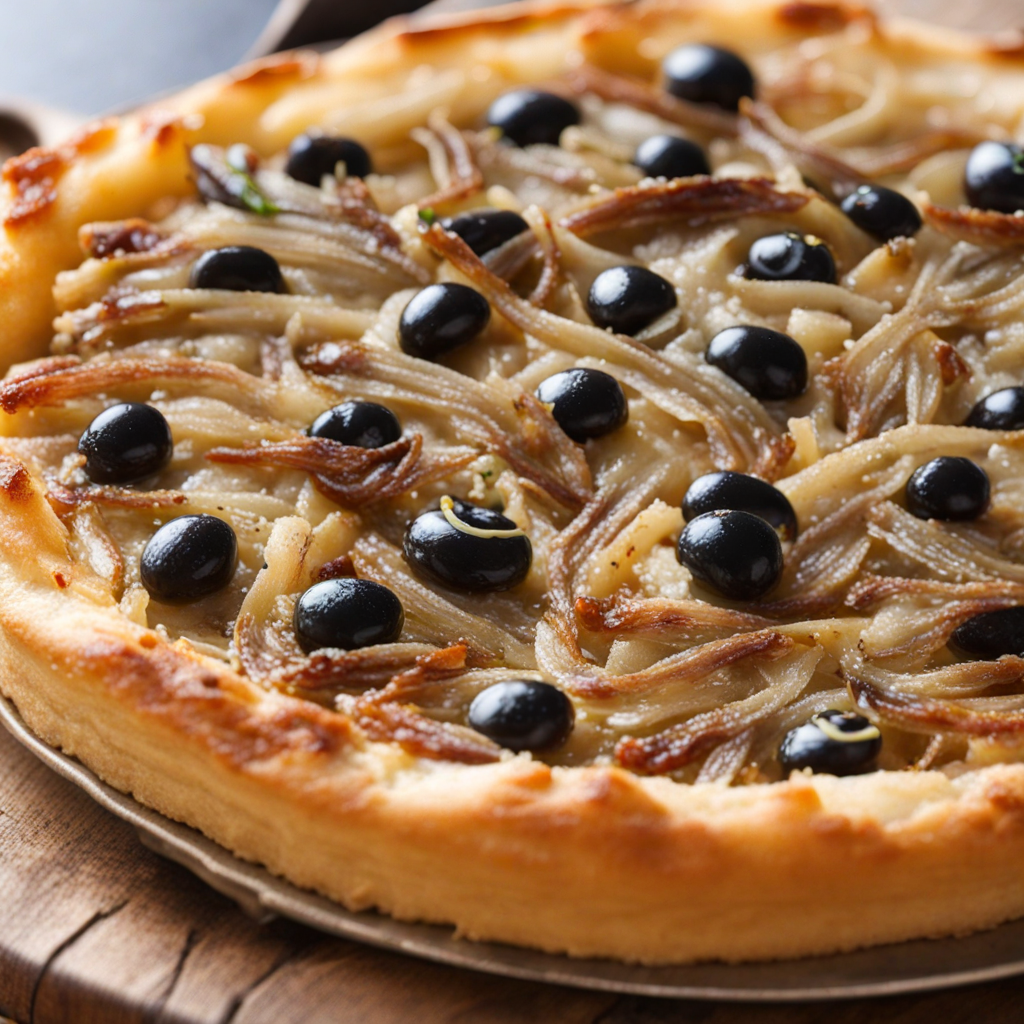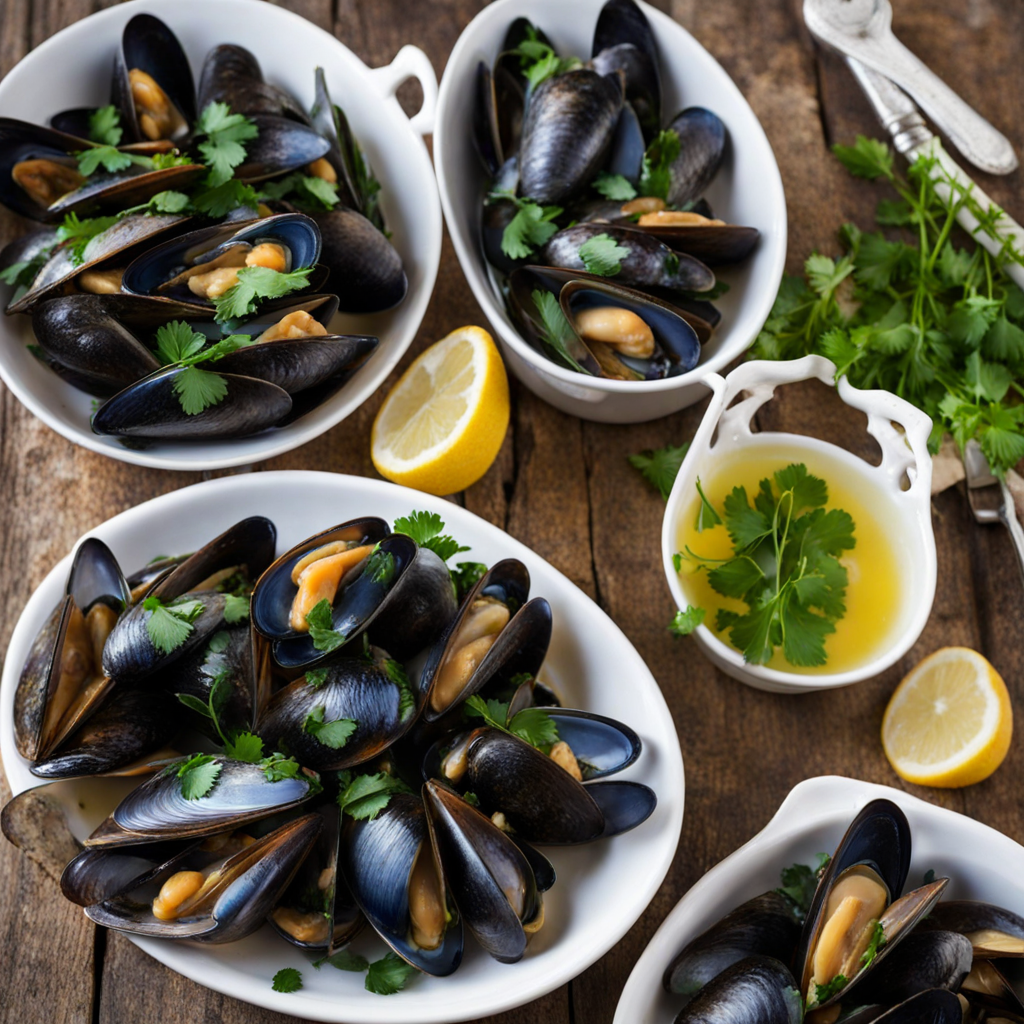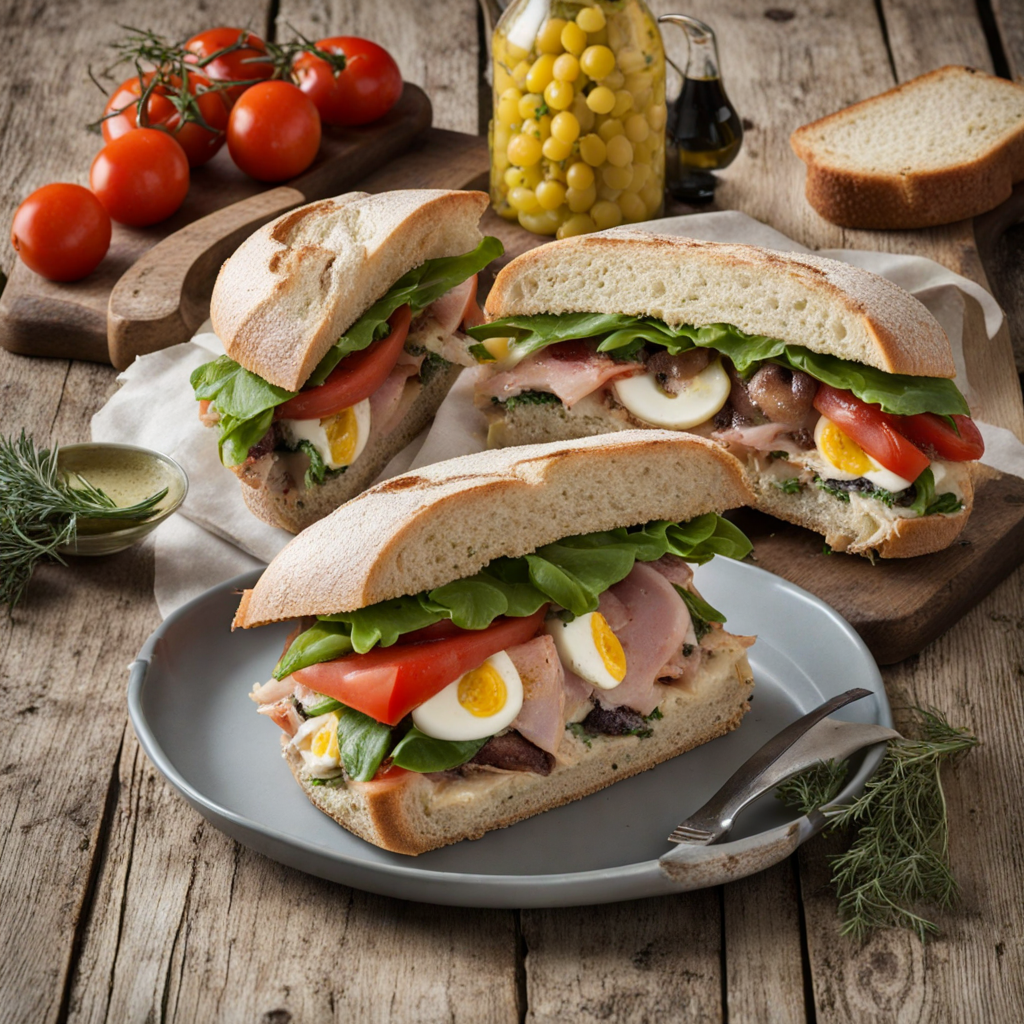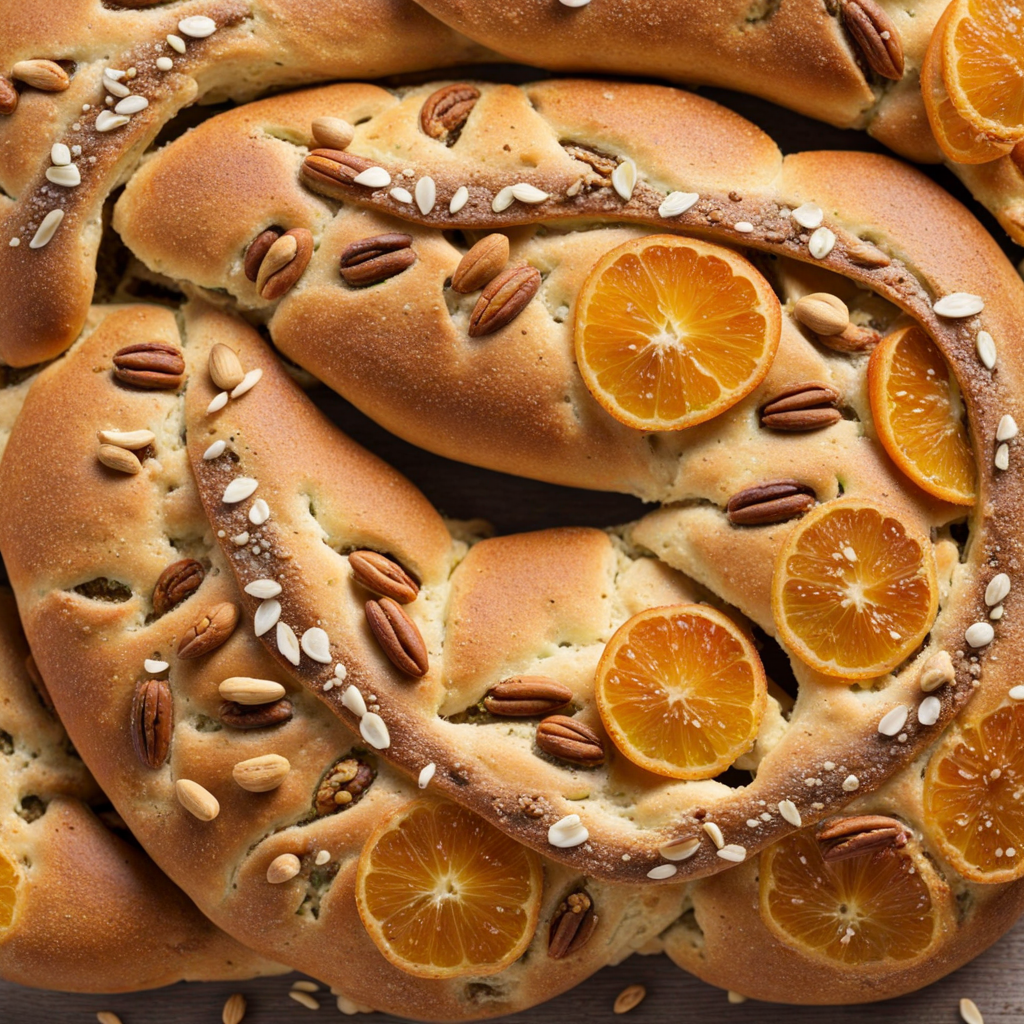Rouille
Rouille is a delightful and aromatic garlic mayonnaise that hails from the coastal region of Monaco, often accompanying the region's rich seafood dishes. This vibrant sauce is characterized by its striking orange-red hue, which comes from the use of saffron and red pepper. The base is typically made from a blend of garlic, egg yolks, and olive oil, whisked together to achieve a creamy and luscious consistency that clings beautifully to any dish it graces. The infusion of saffron not only adds a unique flavor but also brings a touch of luxury, reflecting the opulence of Monégasque cuisine. In Monaco, rouille is traditionally served alongside the famous Bouillabaisse, a hearty fish stew filled with a variety of fresh fish and shellfish. The sauce enhances the soup's flavors, providing a garlicky kick and a subtle heat that beautifully balances the dish's richness. Diners often take pleasure in swirling the rouille into their bowls, creating a harmonious blend of tastes and textures that elevates the dining experience. Its versatility also allows it to pair well with grilled fish, crusty bread, or even roasted vegetables, making it a staple in the Mediterranean culinary repertoire. The allure of rouille extends beyond its taste; it is also a reflection of the vibrant culture of Monaco, where food is an integral part of social gatherings and celebrations. The process of making rouille can be an enjoyable and interactive experience, inviting friends and family to partake in the preparation. Whether enjoyed in a humble seaside bistro or a lavish restaurant, rouille promises to tantalize your taste buds and transport you to the sun-kissed shores of the Mediterranean, leaving a lasting impression of the flavors of Monaco.
How It Became This Dish
Rouille: A Culinary Gem of Monaco Rouille, a vibrant and flavorful sauce, holds a cherished place in the culinary tradition of Monaco and the broader Mediterranean region. With its origins steeped in the rich tapestry of French and Italian cuisines, rouille serves as more than just a condiment; it is a symbol of cultural exchange, historical significance, and gastronomic evolution. #### Origins and Etymology The word "rouille" translates to "rust" in French, a name that is believed to refer to the sauce’s characteristic reddish-orange hue, reminiscent of rusted metal. This striking color is primarily derived from the use of saffron and red pepper, ingredients that not only impart flavor but also reflect the vibrant agricultural practices of the Mediterranean. Historically, rouille is closely associated with the Provençal region of France, particularly in the coastal towns that share a culinary heritage with Monaco. Its origins can be traced back to the rustic kitchens of fishermen and peasants who relied on simple yet flavorful ingredients to enhance their meals. The sauce is traditionally made from a base of garlic, olive oil, and breadcrumbs, with variations that include egg yolk and spices. In the context of Monaco, rouille has become particularly associated with bouillabaisse, a traditional Provençal fish stew. While bouillabaisse originates from the coastal ports of France, its popularity has transcended borders, and it is now a staple in the Monegasque culinary repertoire. The pairing of rouille with bouillabaisse exemplifies the region's commitment to fresh, local produce and the importance of preserving culinary traditions. #### Cultural Significance Rouille is not merely a sauce; it embodies the cultural identity of the Mediterranean. It reflects the region’s history of trade, migration, and cultural exchange. The ingredients commonly used in rouille—garlic, olive oil, saffron—are staples in Mediterranean diets, each with its own rich history. Garlic, revered for its health benefits, has been used since ancient times, while olive oil symbolizes peace and prosperity, often referred to as “liquid gold.” In Monaco, where the sea meets the land, the use of rouille in seafood dishes highlights the close relationship that the Monegasque people have with the Mediterranean Sea. This sauce is typically served alongside fish dishes, enhancing the flavors of fresh, local catches. It is not just about sustenance; it is an expression of community and cultural pride. Rouille is often prepared for family gatherings and celebrations, reinforcing bonds and shared histories. #### Development Over Time Rouille has evolved significantly over the centuries, adapting to changing tastes and culinary practices. While the traditional recipe remains popular, modern interpretations have emerged, showcasing the versatility of this iconic sauce. Contemporary chefs often experiment with additional ingredients, such as herbs or citrus, adding layers of flavor to the classic recipe. The rise of globalization and the food movement has also influenced the way rouille is perceived and prepared. In recent years, there has been a resurgence of interest in traditional cooking methods and local ingredients, leading to a renewed appreciation for sauces like rouille. Chefs are now exploring the historical context of their dishes, often tracing back to the roots of the ingredients and techniques used in preparation. This interest in culinary heritage has allowed rouille to find its place not only in traditional restaurants but also in modern fine dining establishments. Furthermore, the popularity of Mediterranean cuisine around the world has played a crucial role in bringing rouille to international attention. As chefs and food enthusiasts embrace the health benefits and robust flavors of Mediterranean diets, rouille has found its way onto menus far beyond the confines of Monaco and France. Its rich flavor profile and adaptability make it a favorite in various culinary contexts, from casual dining to gourmet experiences. #### Rouille in Modern Cuisine Today, rouille is often served as a dip for crusty bread, a condiment for grilled vegetables, or a topping for seafood dishes. Its adaptability has allowed it to transcend its traditional uses, becoming a staple in many kitchens. In Monaco, it remains a quintessential accompaniment to bouillabaisse, but it has also found its way into other dishes, showcasing its versatility. Modern chefs are increasingly recognizing the importance of local ingredients and sustainability in their cooking. As a result, there has been a renewed interest in the traditional preparation of rouille, with chefs opting for locally sourced garlic and artisanal olive oils, enhancing the depth of flavor and authenticity of the sauce. This trend reflects a broader movement within the culinary world that values heritage and locality, ensuring that the story of rouille continues to evolve while remaining firmly rooted in its origins. #### Conclusion Rouille is not just a sauce; it is a testament to the rich culinary heritage of Monaco and the Mediterranean. Its vibrant flavor, historical roots, and cultural significance make it a beloved component of the region's gastronomy. As it continues to evolve and adapt to modern tastes, rouille remains a bridge connecting the past with the present, celebrating the simplicity and richness of Mediterranean cuisine. In a world where food serves as a reflection of cultural identity and shared histories, rouille stands out as a symbol of the enduring legacy of Monegasque culinary traditions. Whether enjoyed in a traditional bouillabaisse or as a modern dip for fresh bread, rouille encapsulates the essence of the Mediterranean spirit—celebrating community, heritage, and the joy of sharing delicious food.
You may like
Discover local flavors from Monaco



